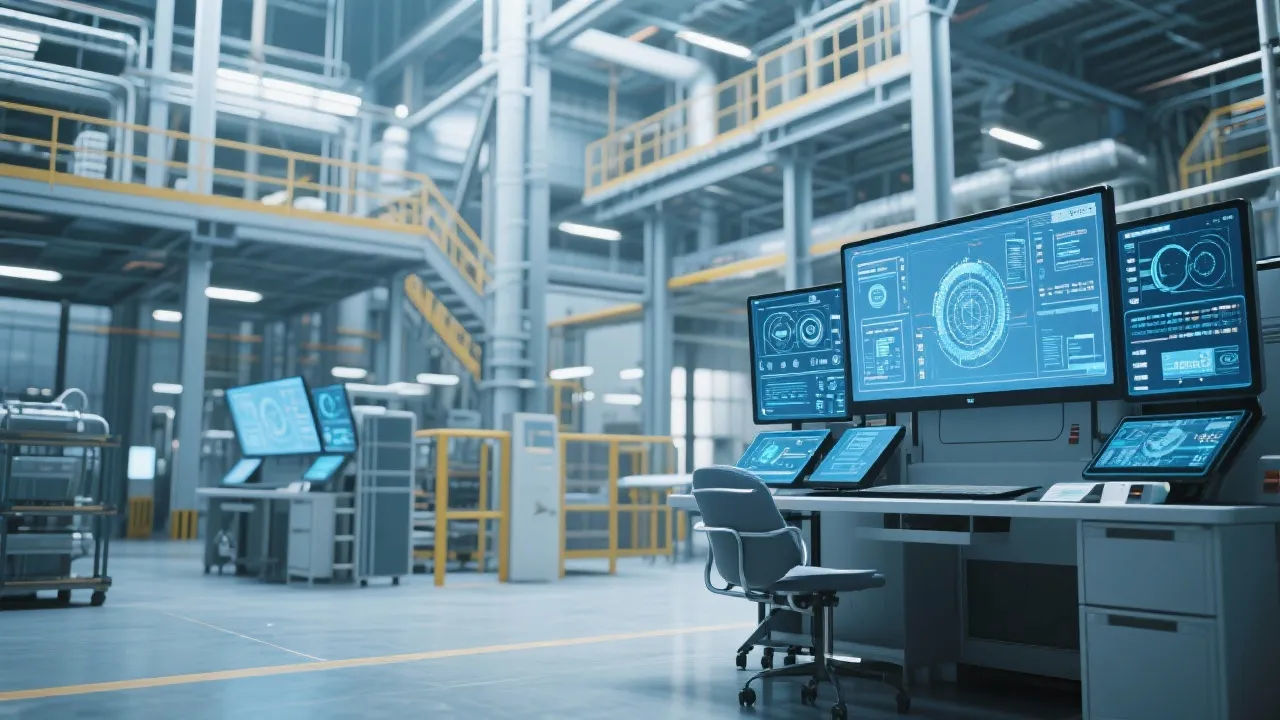This article explores the intricacies of IHM SCADA systems, essential for managing and controlling industrial operations. As a cornerstone of industrial automation, IHM SCADA systems are designed to collect real-time data, execute control over machinery, and ensure efficient operation of various industrial processes. The integration of these systems promises enhanced productivity and operational transparency.

IHM SCADA systems are pivotal in modern industrial operations, offering a comprehensive solution for supervising and controlling various processes through a centralized interface. Short for Interface Human Machine Supervisory Control and Data Acquisition, these systems are central to efficient facility management, enabling real-time monitoring and control capabilities that are crucial for optimal industrial operations. The significance of IHM SCADA is underscored by its application in multiple sectors such as manufacturing, energy management, water treatment, and more. By delivering critical insights into operational performance, SCADA systems not only support the immediate management of processes but also facilitate long-term strategic planning.
The implementation of IHM SCADA systems within industrial settings signifies a leap towards fully automated operations. By harnessing live data acquisition and control capabilities, industries can mitigate downtime, reduce operational costs, and enhance overall productivity. These systems integrate seamlessly with existing infrastructure, providing a reliable platform for data-driven decision-making. The role of SCADA in improving communication and collaboration among various operational departments cannot be overstated. Operators, engineers, and managers can work from the same data set, ensuring that decision-making is based on the most accurate and up-to-date information available.
At the heart of any IHM SCADA system lies a network of components designed to interact cohesively. These include:
Industries adopting IHM SCADA systems can anticipate numerous benefits:
However, deploying these advanced systems comes with its own set of challenges, including:
| Component | Functionality |
|---|---|
| HMI | Provides an interface for process visualization and user interaction. |
| Supervisory System | Oversees data collection and control operations. |
| RTUs | Connects sensors to the SCADA network, relaying important data. |
To further understand the impact of IHM SCADA systems, examining real-world applications can provide valuable insights. Here are a few notable case studies:
A large municipal water treatment facility implemented an IHM SCADA system to monitor and control its extensive network of pumping stations and treatment plants. Before the SCADA implementation, operators relied on manual inspections and paper record-keeping, which often delayed response times to equipment failures. With the new system, the facility could monitor water quality in real-time, detect issues such as pump malfunctions, and automate alerts for hazardous conditions. This transition not only improved response time but also significantly reduced operational costs by optimizing chemical usage and energy consumption.
A leading automotive manufacturer adopted an IHM SCADA system to oversee its assembly line operations. By implementing real-time monitoring of machinery and integration with predictive maintenance strategies, the company was able to reduce unplanned downtime by 30%. The system collected data from various sensors across the production line and analyzed it to predict failures before they occurred. Furthermore, the integration of data analytics allowed management to make informed decisions regarding production schedules and inventory management, leading to a significant increase in overall efficiency.
An international oil and gas company utilized SCADA technology in its pipeline management operations. This IHM SCADA system enabled the company to detect leaks, monitor pressures, and manage flow rates across hundreds of miles of pipeline. By using advanced data analytics, the firm could predict maintenance needs based on real-time data and environmental factors. This proactive approach not only enhanced safety by reducing the risk of spills but also improved operational efficiency, resulting in substantial cost savings for the company.
The field of IHM SCADA systems is rapidly evolving, driven by advancements in technology and the growing demand for more intelligent automation solutions. Key trends shaping the future of SCADA systems include:
As industries continue to evolve and embrace digital transformation, the role of IHM SCADA systems becomes ever more critical. These systems not only enhance operational efficiency and safety but also pave the way for future technological advances in industrial automation. By addressing the challenges associated with their implementation and staying abreast of emerging trends, businesses can unlock the full potential of IHM SCADA systems. This will ensure sustained growth and competitive advantage in today's dynamic market landscape. As we move forward, organizations that leverage the capabilities of IHM SCADA will be better positioned to respond to the ever-changing demands of their operational environments, thereby securing their place in the future of industrial automation.
Explore the Tranquil Bliss of Idyllic Rural Retreats

Ultimate Countdown: The 20 Very Legendary Gaming Consoles Ever!

Affordable Full Mouth Dental Implants Near You

Discovering Springdale Estates

Embark on Effortless Adventures: Unveiling the Top in Adventures Made Easy Outdoor Equipment

Unlock the Full Potential of Your RAM 1500: Master the Art of Efficient Towing!

Dodge Ram: Redefining the Future of Full-Size Trucks with Unmatched Power and Innovation

Get New Phones Without Plans Easily

Smart Strategies to Slash Costs on Your Roof Replacement Endeavor
